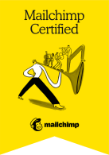Chapter 2: Evolution – Bromide to Plate
As with almost anything in this day and age, there is a history and an art form attached to all aspects of design – from the timely processes of traditional printing, to the clever and current innovations of digital. This evolution has been witnessed by JAZ over the past 25 years, as we too, dipped our toes in the proverbial pool of progression and possibilities.
Even though the concept of modern graphic design is largely related to the industries of advertising, arts and communication, its history dates back to the time when man first started to express himself with tools, more specifically, with the intent to produce a visual and lasting representation of these ideas, using methods that changed and adapted with the eras.
JAZ was conceived in the early 1990s, at a time when _type houses and chemical photo labs where still a thing, and every element of our craft was done by hand. ‘Graphics’ is not a novel concept, nor is it something that only came about with the arrival of computers. Instead, back in 1992 the process of creating a logo, postcard, brochure, or sign owed itself to many late nights, cutting and pasting, and of course the love-hate relationship with bromides. While in today’s lingo the term ‘proof’ will suffice, a ‘bromide’ referred to the photographic print of an artwork or design on bromide paper (also known as photomechanical transfer), was the foundation from which films (negatives) were painstakingly made, hard to master, and very expensive if you weren’t to get it right on the first try.
Back then designers were artists who pledged their allegiance to bulk equipment and drawing boards, and took care to not bother the grumpy _typesetter in the back room. Education was essential, as they not only had to draw their ideas out, but also be wizards in the art of font sizes and usage, kerning, leading, layers, adjustments, alignments, and so on, all while making sure their concepts were clear enough for the _typesetter to decipher. _typesetting in its earliest form was laborious enough – think back to those small metal letters that were arduously put into a _typesetting block, and then inked up and manually printed by hand.
The advent and development of desktop publishing saw _typesetters literally disappear overnight, as designers now had to grapple with this art form on their computers. And as technology advanced at a rapid pace towards the digital age, so too the casualties grew, as film houses also disappeared and we could now image direct to the printing plates.
Interestingly, since the revolution from Letterpress to Offset, the fundamental printing process hasn’t changed that much, however, the boundaries that were once fundamental to this process have also since disappeared. No longer is there a conveyor belt of designers, _typesetters, film houses (prepress) and printers, but rather, both the design process and the title of ‘Designer’ itself have become all encompassing.
The value of design as an art form therefore owes itself to its intrinsic desire to maintain its relevance, as while the mechanics have certainly changed over time, the heart of graphic design still lies in the continual development of its practice: the idea becomes the drawing, the drawing becomes the design, the hand becomes a pen, a printer, a software and then an app… and before we know it, the initial idea in itself becomes a micro-universe with layers upon layers of trial and errors, and finished products.
The roots of JAZ lay in traditional graphic design and despite the best efforts by software manufacturers; the one thing you can’t put in a box is creativity. These days, graphic design, web design, interface design and marketing are deeply attached through digital production: 25 years ago it was a lot easier for a brochure or printed material to incite physical engagement, as snail mail was still widely prevalent and perhaps more tangible than the cyber world of today. But in staying true to the core purpose of graphic design – which is to communicate – it needs to be done so in a clear and effective way.
That’s where strategy comes in. In combining the two schools of design and marketing – in essence pictures and words – designers not only have to consider aesthetics, but also user experience and the purpose behind the visuals. For just as with anything worth believing in, there needs to be a justification for why it’s there: a pretty picture is little more than that without some kind of deeper meaning or intent. With this in mind JAZ has positioned itself as a pioneer of strategic design, without losing our passion for creativity that keeps us in the game.
Not sure where to start?
Let's have a conversation, call 1300 852 102
Join our community for the latest tips & news
JAZ is located on land belonging to the Whadjuk Noongar people, and we recognise and pay respect to the Traditional Owners and Elders of this country and the significant importance of their cultural heritage.
Privacy Policy | © 2023 JAZ Creative

